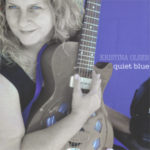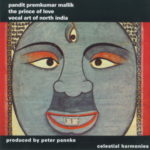Description
“What a long strange trip it’s been.” It was the Grateful Dead who sang that line, but it’s David Parsons who has actually lived it.
In Retrospect: 1980-2003 is a double CD retrospective of David Parsons’ recording career, one heavily influenced by other cultures and extensive travel.
In 1965, before the Beatles/sitar explosion, Parsons was at a barely attended concert by legendary Indian sitarist Ravi Shankar. “It was,” he says, “love at first sight.” He bought himself a sitar and began to teach himself.
CD review by Tony Smith
TN1565-66 – $30
TN155 Apr 23
David Parsons has a long discography from which to choose a retrospective.
As an extensive musical biography in the sleeve notes shows, he has played and toured widely, especially in the eastern world.
Parsons got into what was in the 1960s regarded as this extremely exotic field when he heard Ravi Shankar playing his sitar.
During the following decades, Parsons’ own musical compositions and performance developed in sophistication, but he continued to research and collect in both the middle east and south east Asia.
He produced the ‘Music of Islam’, originally intended as a six CD set but which extended to 17 CDs.
Other omnibus sets for Celestial Harmonies or for Fortuna One Music have included the ‘Music of Vietnam’, the ‘Music of Cambodia’, ‘Music and Dance in Indian Art’, ‘Yogyakarta: Gamelan of the Kraton’ and ‘Ritual Music of Tibetan Buddhism’.
No doubt inspired by the enormous range of tunes, rhythms and melodies he encountered on these journeys with local folk artists, Parsons launched into the expressive use of the synthesiser, which was still in its developmental stages.
The resulting sound might well be described as ‘New Age’ or would have been when new age was new.
In Retrospect has two CDs, each of some 78 minutes playing time.
The tracks on the first disk are ‘Introspect’, ‘Varuna Ghat’, ‘Tibetan Plateau’, ‘Dhauladhar Dreaming’, ‘Whirling into the Light’, ‘Urartu to Ubud’ and ‘Manasarovar’.
On the second CD are ‘Maitreya’, ‘Dorje Ling’, ‘Separation’, ‘Himalaya’, ‘Shaman’ and ‘Dawa Gompa’.
The places named in the titles give some hint as to the style of the piece, but not in any restrictive way. Essentially, Parsons’ own ideas and interpretations guide the music.
At an initial listening, the tracks seem to have greater similarity than any unique character.
Each is slow to unwind and takes the listener into a place where it is best not to anticipate any dramatic developments.
In these tracks you will hear fiddles from different traditions, percussion like the tabla, plucked instruments, flutes, gongs, bells and vocal chants.
You will experience the high cool places around the Himalayas, the dry lands of the middle east and the steamy conditions of Indonesia.
Perhaps not all listeners will agree, but I like knowing where I am!
In other words, I prefer those pieces which suggest a geographical context.
Others might be transported out of themselves and be less concerned about the destination, going with the flow of the music as it were.
CD review by Chris Spencer
I must confess, not being an enthusiast of meditation nor ambient music, that I found the information contained in the extensive notes on this CD, about the background and overview of Parson’s musical career more interesting than the ‘music’ contained on the CD.
Parsons is now considered ‘an electronic music pioneer’ and a well respected recording engineer and producer of world music.
I’ll sumarise this information, as it provides a good point of introduction into the musical career of Parsons.
David was born and still lives in New Zealand.
He originally started out as a jazz drummer, but wanted to play a melodic instrument.
Before George Harrison introduced the sitar to pop music via the Beatles, Parsons became inspired to learn the sitar after attending a concert by Ravi Shankar who toured New Zealand.
After seven years of teaching himself how to play, he went to India to continue his studies.
While there, he heard recordings of early synthesiser music.
Upon returning to New Zealand, he purchased his own synthesiser and began mixing electronic and natural sounds together, learning how to add multiple tracks on top of each other using a primitive tape recorder.
An early homemade cassette made its way to America, where the manager of a New Age music label heard the cassette and persuaded Parsons to continue recording more albums for the label.
A visit to a monastery of Tibetan monks in India provided more inspiration, which propelled Parsons to record the music of other Asian countries, such as Cambodia, Vietnam, Bali and West Java.
His interests also lead him to become a composer of film and television music, culminating in the production of a 17 CD collection titled, The Music of Islam.
So what we have here on this double CD of 13 pieces, containing nearly an hour and 20 minutes of running time, are pieces selected from his recorded work, culminating in 2004.
I would describe most of the music on these two CDs as ambient, while other descriptions are ‘aural landscapes and sound sculpting’, New Age music.
It’s relaxing, although Parsons notes that some of his music has a dark underbelly, created by his use of the sitar.
I would suggest that those readers who are interested in ambient, backgound music or relaxation music would find this compilation an essential purchase.
While a whole album of one particular theme might be more relaxing, the individual tracks on these CDs are woven together with skill, no abutting tracks are jarring in comparison.
Despite the album being 17 years old, the contents still sound fresh today.







